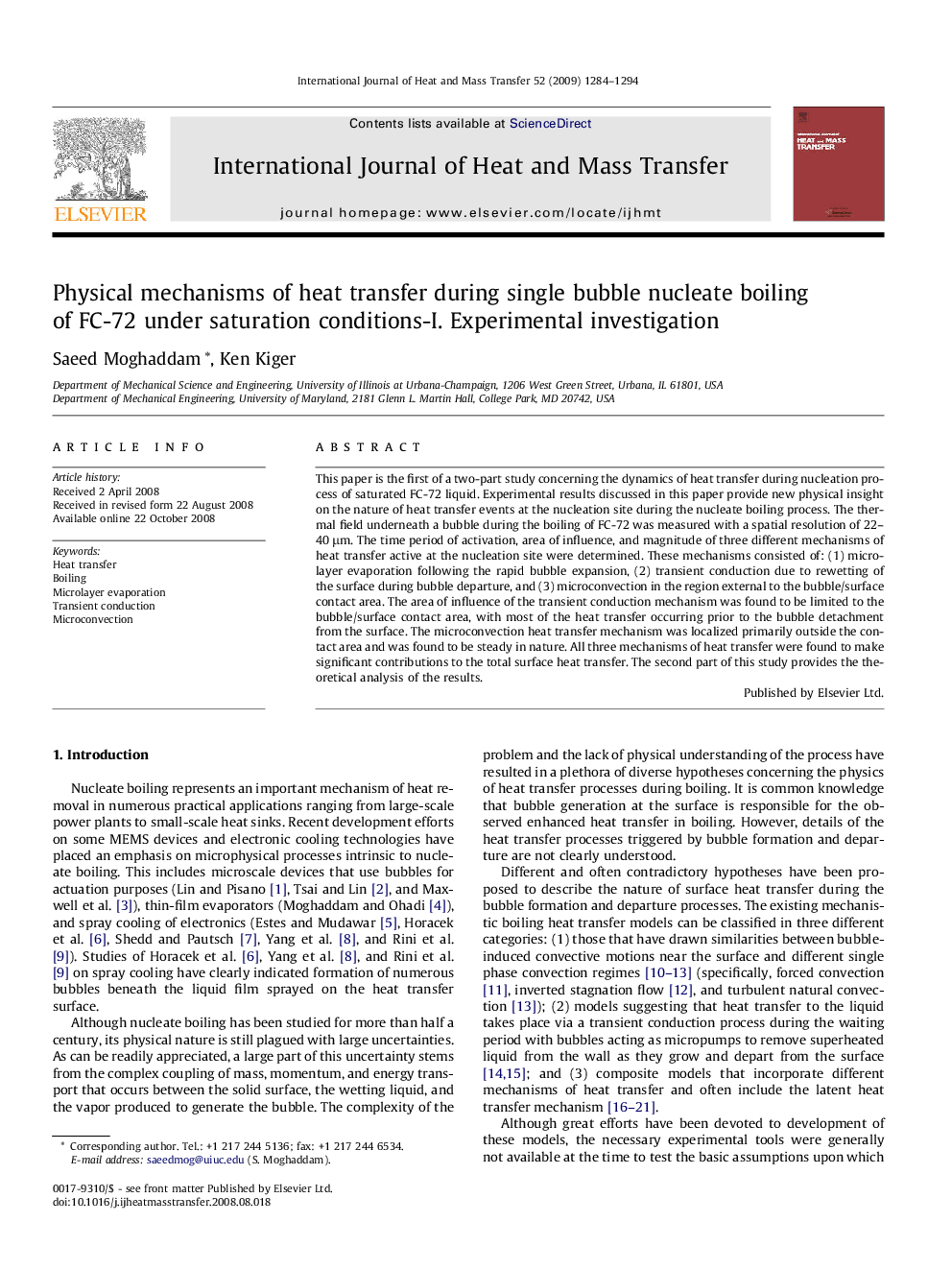| Article ID | Journal | Published Year | Pages | File Type |
|---|---|---|---|---|
| 659735 | International Journal of Heat and Mass Transfer | 2009 | 11 Pages |
This paper is the first of a two-part study concerning the dynamics of heat transfer during nucleation process of saturated FC-72 liquid. Experimental results discussed in this paper provide new physical insight on the nature of heat transfer events at the nucleation site during the nucleate boiling process. The thermal field underneath a bubble during the boiling of FC-72 was measured with a spatial resolution of 22--40 μm. The time period of activation, area of influence, and magnitude of three different mechanisms of heat transfer active at the nucleation site were determined. These mechanisms consisted of: (1) microlayer evaporation following the rapid bubble expansion, (2) transient conduction due to rewetting of the surface during bubble departure, and (3) microconvection in the region external to the bubble/surface contact area. The area of influence of the transient conduction mechanism was found to be limited to the bubble/surface contact area, with most of the heat transfer occurring prior to the bubble detachment from the surface. The microconvection heat transfer mechanism was localized primarily outside the contact area and was found to be steady in nature. All three mechanisms of heat transfer were found to make significant contributions to the total surface heat transfer. The second part of this study provides the theoretical analysis of the results.
